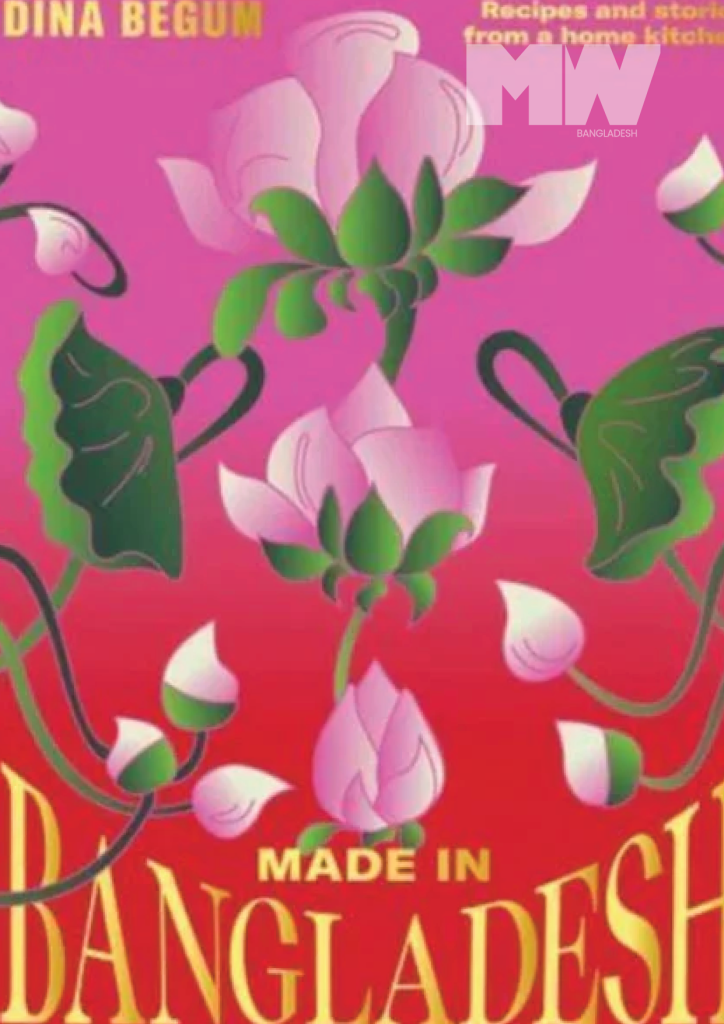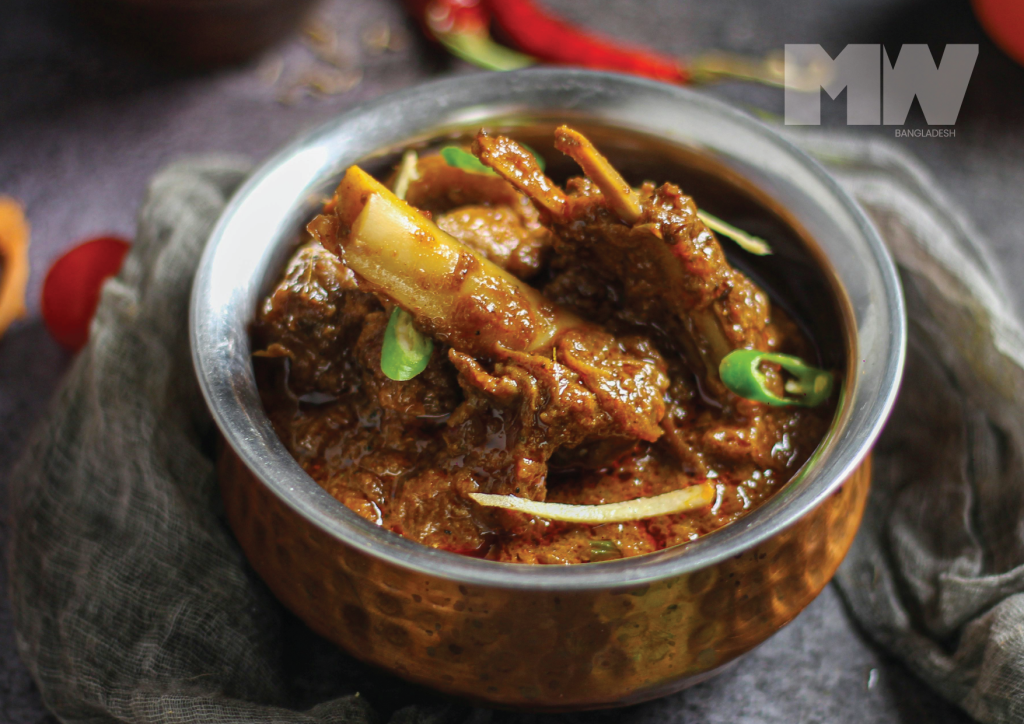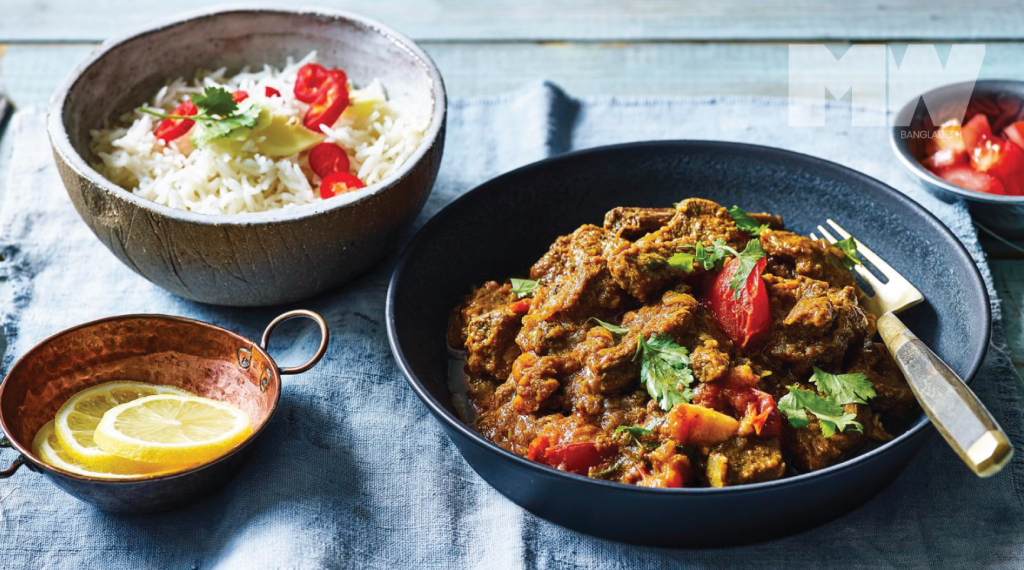The Made in Bangladesh author shares her story and a special recipe
Usraat Fahmidah
Dina Begum’s latest cookbook, Made in Bangladesh, takes readers on a journey through the rich and diverse landscape of Bangladeshi cuisine. Bangladeshi cuisine is highlighted in a way never done before.
“I started writing in notebooks when I was a child. It started with writing recipes, and family recipes. That was in my early teens. Professionally, it has been 10 years since I started writing about food. But my whole life since my early teens, I have been writing, and collecting recipes,” she tells me during our conversation.
This isn’t Dina’s first cookbook. Dina, who was born in Sylhet and moved to England at the age of four, has previously authored Brick Lane – Food from Everywhere, which shares the food history of immigrant communities including Bangladesh. But she describes Made in Bangladesh as her “dream cookbook.”

“I’ve always wanted to write a book that encapsulates Bangladeshi cuisine as a whole, offering a general overview of our food. Growing up, I never saw anything like this, which inspired me to celebrate Bangladeshi cuisine and family recipes. My aim was to create something that anyone – whether Bangladeshi, part of the Bangladeshi diaspora, or not – could dip into as a reference for general recipes,” she shares.
“While there’s much more to our cuisine than what I’ve captured in this book, it serves as an introduction to Bangladeshi food culture and history. This project is particularly important to me because there are few books on Bangladeshi cuisine in English, especially those that are internationally recognized. I’m proud that my cookbook is widely available worldwide.”

Talking about her inspiration, she passionately shares: “I wanted to help preserve the cuisine, culture, recipes, and stories of our ancestors and family members, and to pass them on to the next generation, so that they could use this as a valuable reference point.”
Made in Bangladesh is exactly that – a starting guide to Bangladeshi cuisine.
While discussing the research process, Dina explains: “It took a while. As I mentioned, the recipes are from my childhood and growing up. However, the research for this book started even before my first book. I have always been gathering information to gain a broad perspective. I wanted the book to reflect all regions of Bangladesh, not just Dhaka or Sylhet where my family is from. To achieve this, I researched every region and division of Bangladesh.”
In 2022, Dina went on a research trip to Bangladesh to gain more insights into regions like Dinajpur and Khulna, which she was less familiar with. By then, she had collected most of the recipes from various divisions. She sought unique recipes from other regions, reaching out to family and friends for their input. “The process involved continuously asking people to ensure the recipes would be familiar and relatable to those from each region,” she says. “I am always curious about different regional specialties. So, I tried to incorporate that as much as possible in my book.”
Dina’s latest cookbook is creative, artfully divided into six seasons, each showcasing distinctive recipes that capture the culinary essence of the diverse regions of Bangladesh. This unique approach not only offers a fascinating glimpse into the country’s rich culinary history but also serves as the perfect starting point for readers eager to embark on a journey through Bangladeshi cuisine. With its meticulously curated collection of regional specialties, this cookbook emerges as an indispensable guide for those seeking an authentic introduction to the vibrant and diverse flavors that Bangladesh has to offer.

Her cookbook pays special homage to bhortas, a quintessential Bangladeshi delicacy, showcasing a mouthwatering array of recipes that elevate these humble yet flavorful dishes. From the classic Aloo Bhorta to the irresistible Begun Bhorta and the Bhaja Maacher Bhorta, each classic recipe finds a place in her cookbook. Dina thinks bhortas are anything but basic.
One dish that particularly captivated Dina during her culinary exploration was the Chittagong specialty “durujkura,” a whole braised chicken. “I remember seeing it on a Bangladeshi TV show years ago, where someone was cooking it in a village without any exact ingredients or recipe. I recreated it by asking family friends, who shared that it’s a popular dish in their regions, typically served to a new groom. So, it is a celebratory dish. I have divided the book into six seasons. One of these seasons, autumn, is more celebratory because, in Bangladesh, the wedding season starts around that time. Everyone loved the “durujkura” because it’s a roast chicken that isn’t cooked in the oven but in a pan. It looks festive since it’s a whole chicken, complemented by caramelized onions. It has a distinct flavor and takes time to cook since it’s a traditional dawat cuisine. This recipe in particular I loved because it’s so celebratory and versatile.”
In a culinary landscape where Bangladeshi cuisine has often been overshadowed by the broader category of “Indian food,” Dina Begum’s cookbook stands as a bold and necessary effort to reclaim and celebrate the distinct flavors and traditions of Bangladesh. For too long, the diversity of Bangladeshi cooking has remained largely undocumented outside of Bengali-language publications, with few of its staples finding their rightful place in the global culinary discourse. However, with this cookbook, Begum carves out a well-deserved space for Bangladeshi food, elevating it to the forefront and showcasing its unique essence. Dina’s cookbook stands as a heartfelt tribute to the culinary marvels of Bangladesh, a labor of love that highlights the nation’s diverse and captivating flavors.
“I have worked so hard on this project. I have people sending me messages saying ‘Thank you for doing this,’ which makes all of this worthwhile. I feel proud that I have been able to put this forward, and showcase the food of Bangladesh and its culture,” she adds.
SHATKORA DIYE GORUR MANGSHO (Beef with shatkora citrus)
by Dina Begum
Shatkora is a citrus that originates from the Sylhet region and is a prized ingredient.
It has an unmistakable fragrance unlike any other citrus, a firm, nubby exterior and very
little juice, so it’s only used to cook with. This dish is a classic, and one we make often.
If people visit Sylhet, or a Sylheti home, they seek out or request this, as it’s divine. Once cooked, the tart, bittersweet shatkora paired with spiced beef makes for a mouth-watering dish served with rice. Shatkora can be found fresh in Bangladeshi grocery stores, or in the freezer section, in slices. If you can’t get hold of any, try substituting pomelo or grapefruit, or a combination of both. Serve with rice and Bangla salad.
Serves 4–6
1/4 shatkora, fresh or frozen (about 175 g/6 oz)
6 tablespoons vegetable oil 4 garlic cloves, crushed
(2.5 cm) 1 inch piece fresh root ginger, grated
2 medium onions, chopped 2 teaspoons salt
1 kg (2 lb 4 oz) beef chuck, or shoulder on the bone, cut into 2.5 cm (1 in) pieces
1 bay leaf
1 star anise
1 cinnamon stick
4 cardamom pods
350 ml (111⁄4 fl oz/11⁄2 cups) cold water
1⁄2 teaspoon garam masala
2 teaspoons chilli powder
1 teaspoon Kashmiri chilli powder
1 tablespoon ground cumin
1 tablespoon ground coriander
11⁄2 teaspoons ground turmeric
500 ml (17 fl oz/generous 2 cups) boiling water
4 whole green chillies
handful of fresh coriander (cilantro), chopped
If using fresh shatkora, cut it into wedges and then chop them into large pieces – around three per wedge. Remove any seeds. For frozen shatkora, soak in cold water for one hour, then chop each piece and set aside.
Heat the oil in a large saucepan over a medium–high heat. Add the garlic, ginger, and onions, along with the salt. Stir for 2–3 minutes until the onions are soft, then add the beef, bay leaf, and whole spices, followed by the measured cold water. Reduce the heat to medium, then mix everything together and bring to a simmer. Cover and cook for 45 minutes, stirring every 10–15 minutes. If the meat appears to be catching on the bottom of the pan, just add a dash of water.
Stir in the ground spices, ensuring they coat the beef, then cover and cook for 5 minutes.
Add the measured hot water and the shatkora. Increase the heat to high and bring to the boil (do not stir), add the green chillies, then reduce the heat to low and cover. Cook for 20–25 minutes, or until the meat is tender. Stir in the chopped coriander, cook for a final 2–3 minutes, then serve.
Usraat Fahmidah
- Usraat Fahmidah#molongui-disabled-link
- Usraat Fahmidah#molongui-disabled-link
- Usraat Fahmidah#molongui-disabled-link













